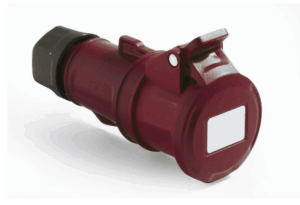
A team of researchers from the University of Rochester has developed a new optical component that promises to significantly improve the brightness and image quality of augmented reality (AR) glasses. This innovation could help AR glasses become as integral to daily life as smartphones. The findings were published on November 11, 2025, in the journal Optical Materials Express.
Current AR headsets often suffer from limitations such as bulkiness, short battery life, and dim displays that hinder usability, particularly in outdoor settings. Team leader Nick Vamivakas stated, “By creating a much more efficient input port for the display, our work could help make AR glasses much brighter and more power-efficient, moving them from being a niche gadget to something as light and comfortable as a regular pair of eyeglasses.”
Innovative Design for Enhanced Performance
The researchers introduced a groundbreaking design by replacing the traditional waveguide in-coupler, which serves as the input port for images entering the glasses, with one that features three specialized zones made from metasurface material. This new configuration aims to enhance performance and image clarity. Vamivakas remarked, “We report the first experimental proof that this complex, multi-zone design works in the real world.”
Metasurfaces are ultra-thin materials with features much smaller than a human hair, allowing for unprecedented control over how light is manipulated compared to traditional optics. The team’s innovation focuses on improving the in-coupler—identified as a major source of light loss in current AR systems.
“The work to improve the in-coupler is part of a larger project aimed at using metasurfaces to design the entire waveguide system,” noted Vamivakas. This includes not only the input port but also the output port and the optics guiding light throughout the device.
Testing and Future Applications
To validate their new design, the researchers fabricated and tested each of the three metasurface zones individually, followed by tests of the fully assembled device. Measurements indicated that the average coupling efficiency across a field of view from -10° to 10° was approximately 30%, closely aligning with the predicted efficiency of 31% from simulations. Performance was notably less efficient at the edges of the field of view, which the researchers attribute to the design’s angular sensitivity and minor fabrication imperfections.
Looking ahead, the team aims to apply their metasurface design framework to other components within the waveguide system. Future plans include expanding from a single color (green) to full-color (RGB) operation while refining the design to improve manufacturing tolerance and reduce efficiency drops at the edges of the field of view.
For commercialization, the researchers highlight the need for a fully integrated prototype that combines the new in-coupler with a micro-display engine and an out-coupler. Additionally, a robust manufacturing process must be established to replicate the intricate nanostructures at a low cost.
The potential applications of this advanced technology extend beyond AR glasses. Vamivakas suggests that the high-efficiency, angle-selective light coupling could also be utilized in head-up displays for automotive or aerospace sectors, as well as in advanced optical sensors.
This innovative research not only represents a significant step forward in AR technology but also opens avenues for broader applications in various fields, potentially transforming how we interact with digital content in our everyday lives.





